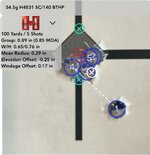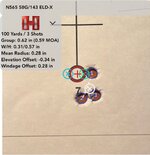Mule3006Elk
WKR
Those of you that have been down this rabbit hole school me. I have Lapua brass and do all the standard brass prep,
I use Redding bushing dies and I removed the expander ball from the get go. I set neck tension to 0.002. Is there any benefit if I set neck tension to 0.003 or 0.004 then use a mandrel 0.002 under caliber? I don't neck turn FWIW.
I hunt and work up hunting loads specifically. 300 WM, 30-06, all sub MOA. The chambers are not excessively tight as these are not custom builds so moving some brass to the outside of neck is not an issue. I'm working on a new rifle (6.5 PRC) but still accumulating all the components and reloading essentials.
I love to tinker with reloading and the extra step is not a concern plus minimal expense for the mandrel and die. BUT...if it's not helpful then I won't waste my time.
I use Redding bushing dies and I removed the expander ball from the get go. I set neck tension to 0.002. Is there any benefit if I set neck tension to 0.003 or 0.004 then use a mandrel 0.002 under caliber? I don't neck turn FWIW.
I hunt and work up hunting loads specifically. 300 WM, 30-06, all sub MOA. The chambers are not excessively tight as these are not custom builds so moving some brass to the outside of neck is not an issue. I'm working on a new rifle (6.5 PRC) but still accumulating all the components and reloading essentials.
I love to tinker with reloading and the extra step is not a concern plus minimal expense for the mandrel and die. BUT...if it's not helpful then I won't waste my time.


